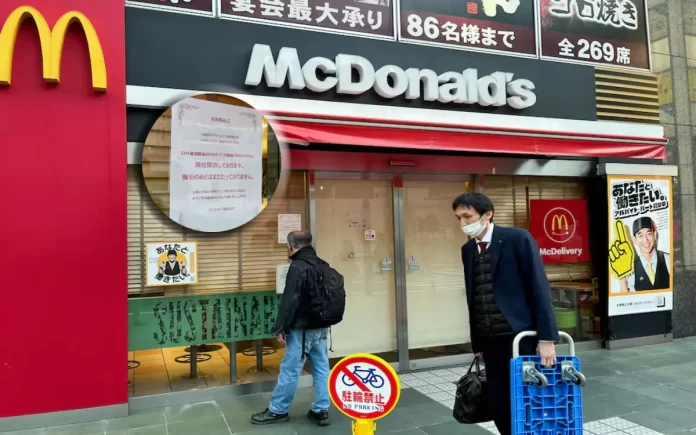San Antonio, Texas: McDonald’s, the iconic fast-food chain that began its journey in the 1940s, has evolved significantly from its humble beginnings of physical counters and paper menus. Today, technology permeates every aspect of McDonald’s operations, positioning it as more than just a burger seller but also as a tech-driven enterprise.
From its mobile app to its self-service kiosks and dynamic digital menus that adapt to trends and weather conditions, McDonald’s has leveraged technology to enhance sales and streamline operations across its vast network of 40,000 locations spanning nearly 100 countries.
However, as McDonald’s increasingly relies on technology, it also faces the risk of technical glitches that can disrupt its global operations. On Friday, system outages affected McDonald’s outlets in major markets like Japan, Australia, and the United Kingdom, leading to temporary closures or the acceptance of only cash payments. Even in San Antonio, Texas, a franchise was unable to process app orders or accept cash, highlighting the widespread impact of the outage.
Read More: Emma Hayes Regrets Choice of Words Regarding Chelsea Player Relationships
McDonald’s attributed the outage to an unnamed third-party provider during a “configuration change.” Despite the inconvenience caused, McDonald’s Japan issued an apology, reassuring customers that operations were back to normal.
This incident underscores the warning issued by McDonald’s in its annual Securities and Exchange Commission filing regarding the company’s increasing reliance on technology. While technology enhances efficiency and customer experiences, any failure or interruption in these systems could have significant repercussions.
Despite such challenges, McDonald’s remains committed to its long-term strategy of embracing technology. The company aims to drive digital orders through its app and kiosks, which accounted for a third of its sales in top markets by 2022. Moreover, McDonald’s recent partnership with Google to migrate its restaurant computer systems to the cloud demonstrates its commitment to leveraging technology for better insights and operations.
Read More: VP Harris: End the War on Weed, No More Jail Time for Marijuana Users
The trend of integrating technology into fast-food operations extends beyond McDonald’s, with competitors like Starbucks also investing in AI-driven platforms for personalized offers and operational enhancements. However, the adoption of new technology also poses risks, as seen with Wendy’s facing public backlash over potential dynamic pricing strategies.
As fast-food chains navigate the intersection of technology and consumer experiences, they must tread carefully to mitigate risks while harnessing the benefits of innovation.



